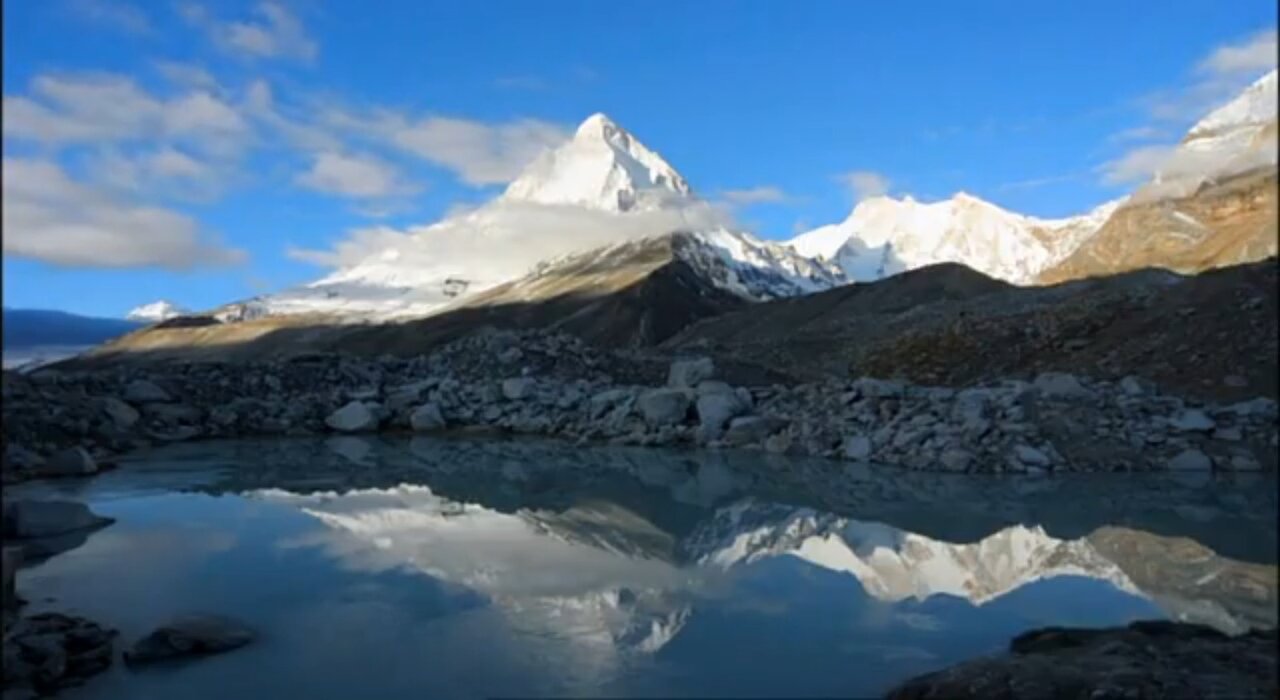Premium Only Content

BBC Ganges 1: Daughter of the Mountains
The first of the programmes, taking the legendary mythology surrounding the Ganges seriously, shows how the natural world and the spiritual world have always been entwined in Hindu thought and life, and explains how the gift of life that the river brings is the reason she is held is such high reverence.
The film gradually follows the Ganges back along its course, ascending further into the Himalayan mountains, and encountering some of the fabled sources of the Ganges, and most Holy pilgrimage centres along the way.
Beginning at Kedarnath as the thaw sets in in May and 100,000s of pilgrims start their annual ascent, we go up through Yamunotri - not the source of the Ganges but of its sister the Yamuna - Badrinath, which has one of the holiest temples on the route, and up to Gangotri.
But geographically this is also not the source and the film follows the path up past Gaumukh and on to the Tapovan meadows, which is identified, at least here, as the true source of the river.
All along this route we get glimpses of the varied wildlife that make their home here, from rare photography of the Snow Leopard in the mountains, to the Lammergeier which, with its 3 metre wingspan, is one of the largest birds of prey, and the Langur or Hanuman monkeys in the huge Deodar trees.
It also visits Nandadevi, the second highest peak in India, and the Valley of Flowers which lies in its foothills, and has over 600 plant species, including the Himalayan Balsam which in Spring cloaks the valley in pink, and we also see something of the bird-life that thrives in the valley.
The film then shows the effects of the monsoon hail storms and rains, which give the river half of its flow-waters in just a few weeks, and helps wash down an astonishing 2 billion tons of sediment into the plains of India, making it the most fertile soil on Earth.
The film ends by following the river down from Devprayag, where the Alakananda and Bhagirathi rivers converge and the Ganges finally is identified as a separate river, and through the Holy cities of Rishikesh and Haridwar.
-
 LIVE
LIVE
Scammer Payback
37 minutes agoCalling Scammer Live
307 watching -
 LIVE
LIVE
Mally_Mouse
3 hours agoLet's Yap About It - LIVE!
392 watching -
 5:35
5:35
Cooking with Gruel
19 hours agoMaking Fresh Salted Caramel
12.9K2 -
 16:16
16:16
DeVory Darkins
16 hours ago $4.05 earnedMedia Panics after Trump Threatens to Sue Media for Defamation
14K41 -
![🔴[LIVE] Fed Powell Speech & FOMC Rate Decision](https://1a-1791.com/video/s8/1/6/p/N/R/6pNRv.0kob-small-LIVE-Fed-Powell-Speech-and-.jpg) LIVE
LIVE
Matt Kohrs
4 hours ago🔴[LIVE] Fed Powell Speech & FOMC Rate Decision
560 watching -
 LIVE
LIVE
StoneMountain64
2 hours agoThe MOST hyped game of the YEAR
261 watching -
 1:50:12
1:50:12
The Quartering
17 hours agoTim Pool SELLS TO DAILY WIRE? Never Eat Hot Dogs Again, Drones & More
74.3K15 -
 1:17:48
1:17:48
Tucker Carlson
3 hours agoTom Homan’s Plan to Destroy the Cartel Empire, End Child Trafficking, and Secure the Border for Good
113K115 -
 1:06:28
1:06:28
Russell Brand
5 hours agoWho Ordered the Hit on Russia’s General Krylov? - SF516
131K239 -
 54:50
54:50
The Kevin Trudeau Show
4 hours agoWhat Men Do Wrong In Relationships | Ep. 75
11.9K3